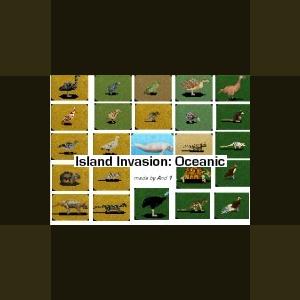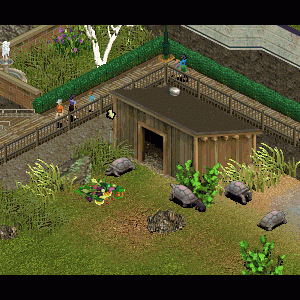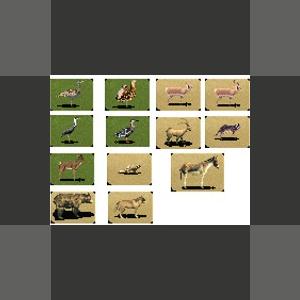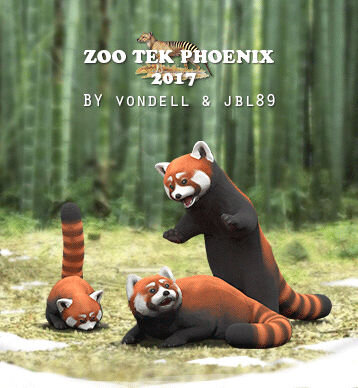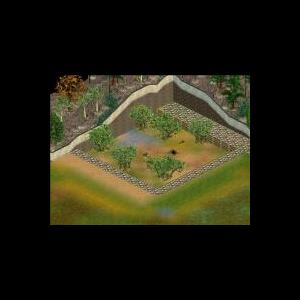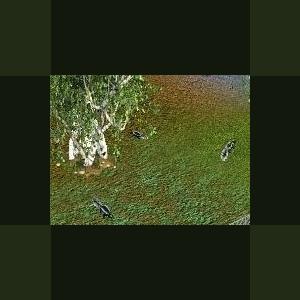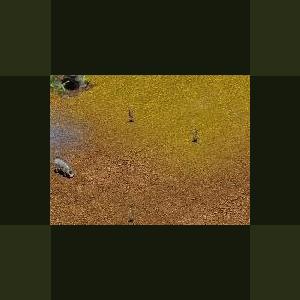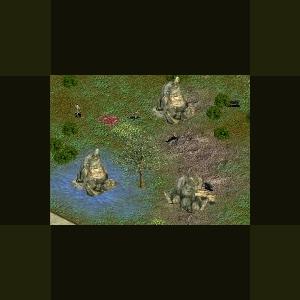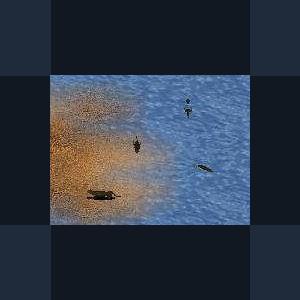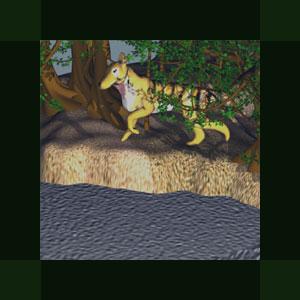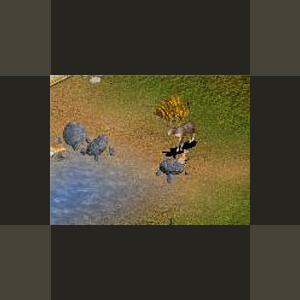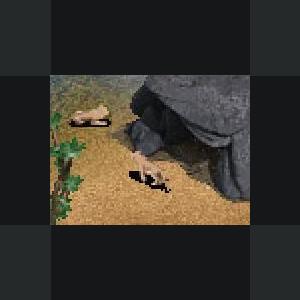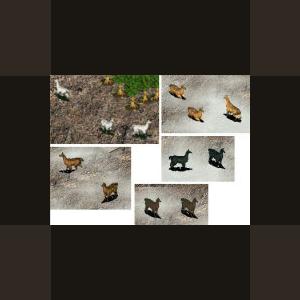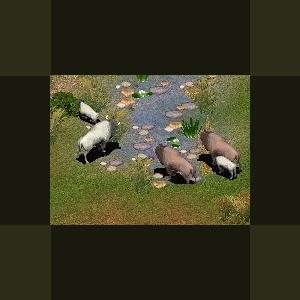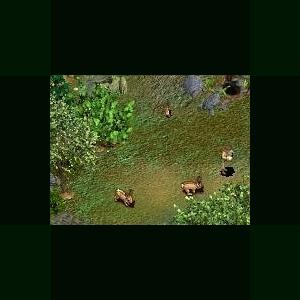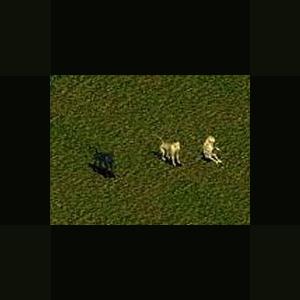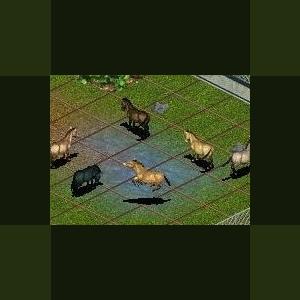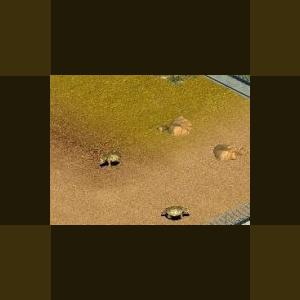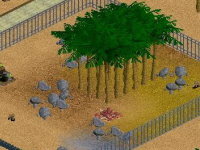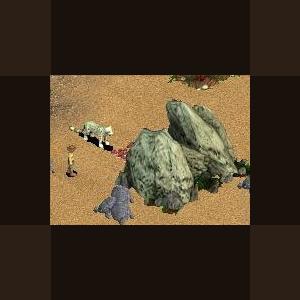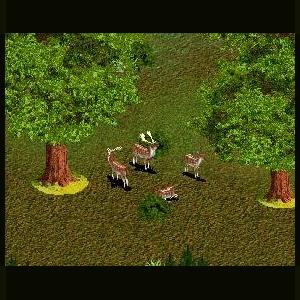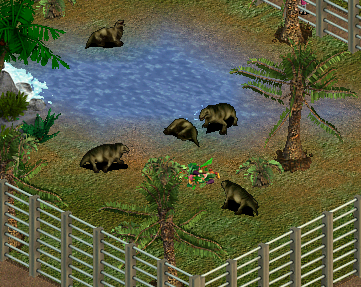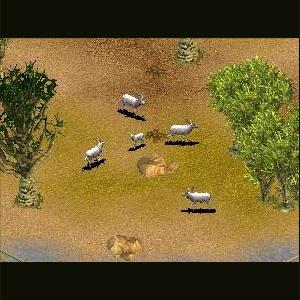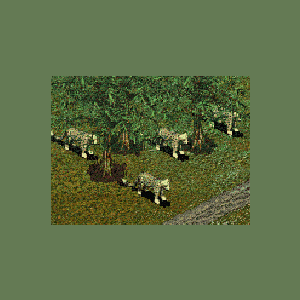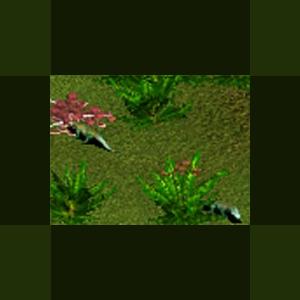279 files
-
Island Invasion Oceanic by And 1
By Guest
The Pack contains 24 animals of the Oceanic Area.
File is in english and german.
Animals included:
Sylviornis neocaledoniae (german: Du)
Numbat
Thorny Devil (german: Dornteufel)
Lace Monitor (german: Buntwaran)
Cape Barren Goose (german: Hühnergans)
Malleefowl (german: Thermometerhuhn)
Spinifex Pigeon (german: Rotschopftaube)
Lesser Bird of Paradise (german: Kleiner Paradiesvogel)
Adzebill (german: Aptornis)
King Island Emu (german: Schwarzer Emu)
Matschie's Tree-kangaroo (german: Matschie Baumkänguru)
South Island Goose (german: Südinsel Riesengans)
Common Wombat (german: Nacktnasenwombat)
Little Spotted Kiwi (german: Zwergkiwi)
Tiger Quoll (german: Riesenbeutelmarder)
Northern Cassowary (german: Einlappenkasuar)
Marsupial Lion (german: Beutellöwe)
Black-spotted Cuscus (german: Tüpfelkuskus)
Weka (german: Wekaralle)
Takahe
Quokka
Meiolania (german: Riesen Hornschildkröte)
Dugong
Western Long-beaked Echidna (german: Westlicher Langschnabeligel)
Updated 2010-11-03
Just to save space with less in zip and smaller image.
Nothing new.
2,060 downloads
Updated
-
Aldabra Giant Tortoise by Vondell
By Cricket
Similar in size to the famous Galapagos giant tortoise but from the opposite side of the earth, the tortoises on the islands of the Aldabra Atoll in the Indian Ocean are some of the largest in the world.
Graphics and animations by Vondell.
Special thanks to Fern and Jay for file checks and assistance.
Please click on the picture to see the animations.
1,646 downloads
Updated
-
Gobi Pack by And 1
By Guest
Pack which contain 11 animals from the Gobi / Mongolian Area. Made by And 1
The Gobi pack contains 11 animals from the Gobi/ Mongolian area:
Gobi Kulan (German: Gobi Halbesel)
Gobi Bear (German: Gobi Bär)
Gobi Wolf (German: Gobi Wüsten Wolf)
Siberian Ibex(German: Sibirische Steinbock)
Mongolian Gazelle (German: Mongolische Gazelle)
Hooded Crane (German: Mönchskranich)
Przewalski's Gazelle (German: Przewalski Gazelle)
Marbled Polecat (German: Tigeriltis)
Chinese Mountain Cat (German: Gobikatze)
Great Bustard (German: Großtrappe)
Swane Goose (German: Schwanengans)
Files are in both German and English
UPDATED 12/20/2008 to correct the file format.
(German)
Updated 2010-11-03
Just to save space with less in zip and smaller image.
Nothing new
11 Nov 2012. Some players have noted that the bear does not appear ingame and this is how to fix it.
Note from Jay re the Gobi bear:
I put And_1_Gobi Bär.ZTD in my dlupdate folder without anything else and it did not appear in the animal purchase menu. I had to change the "ä" to "a" in the ".ztd" name to get it to appear in the animal purchase menu. I assume that it does appear in And_1's ZT, so it might have to do with the language used by each person's MS Windows.
1,343 downloads
Updated
-
Red Panda by Vondell and JBL89
By jbl89
The Red Panda is an original new endangered animal, compatible with Zoo Tycoon 1 (no expansion packs needed).
You might also hear this little critter's unique cry once in a while.
From Wikipedia: The red panda (Ailurus fulgens), also called the lesser panda, the red bear-cat, and the red cat-bear, is a mammal native to the eastern Himalayas and southwestern China. It has reddish-brown fur, a long, shaggy tail, and a waddling gait due to its shorter front legs; it is slightly larger than a domestic cat. It is arboreal, feeds mainly on bamboo, but also eats eggs, birds, and insects. It is a solitary animal, mainly active from dusk to dawn, and is largely sedentary during the day.
- Design by Vondell
- Configuration by Jeff
(to admins: please test this animal once more, I'm using a slightly different version which was stable in my game. Vondell's been active for a bit, but I'm sure he's okay with publishing this first version of the Red Panda)
1,102 downloads
Updated
-
Aardvark by LAwebTek
By Guest
Aardvark By LAwebTek
The aardvark is an odd-looking beast, resembling a giant, hump-backed rat with the head of an anteater, the snout of a pig, and the ears of a rabbit. It grows up to seven-and-a-half feet (2.3 meters) long, including its rat-like though thick and powerful tail. Adults average 110-150 pounds (50-70 kg), but may weigh as much as 180 pounds (82 kg).
Scientists placed the aardvark in its own order, Tubulidentata, which means tubule toothed. The name derives from the aardvark’s cheek teeth, which resemble flat-crowned columns. Each tooth is made of numerous tubular pulp cavities surrounded by hexagonal prisms of dentine.
Aardvarks are covered with thick pinkish-gray skin that protects them from insect bites and may even save them from predators. It is scantily covered with bristly hair varying from dull brownish-gray to dull yellowish-gray. Hair on the legs is often darker than that on the body. Low forequarters add to aardvark’s hump-backed appearance. Short, stocky legs end in toes bearing long, straight, strong, and blunt claws. There are four toes on each front foot, five on each hind foot. The toes are webbed at the base.
When pursued by enemies, aardvarks have three choices. The first two are run or dig! The aardvark isn’t known as a fast runner, though it is said to escape with surprising speed. However, aardvarks excel at burrowing. An aardvark digging in soft earth can beat several people armed with shovels! Its powerful forefeet can even tear through hard, sun-baked ground. What about that third choice? If cornered, an aardvark fights back. It may strike with its tail or shoulders or rear on its hind legs and slash with its clawed forefeet. A desperate aardvark may even roll on its back, slashing with all four feet.
Like most animals, aardvarks prefer to simply avoid predators. They have acute hearing, and flee for their burrows at the least hint of danger. But their eyesight seems to be poor; they frequently crash into trees, bushes, and other obstructions when running.
Aardvarks aren’t commonly seen because they’re mostly nocturnal. They usually spend the day in their burrows, curled up in a tight circle, the hind limbs and tail protecting the snout. Sometimes, an aardvark may be seen sunning itself at its burrow entrance in the early morning.
The aardvark is today restricted to Africa. It ranges from southernmost Africa (the Cape of Good Hope) to southern Egypt, but is generally widespread in suitable habitat south of the Sahara Desert. Aardvarks make homes by excavating burrows that are about ten feet (3 meters) long. An aardvark tunnel ends in a chamber large enough for the animal to turn in. (Aardvarks generally enter and exit headfirst.)
Aardvarks that burrow in areas prone to seasonal flooding are sometimes forced to evacuate their burrows. Aardvarks reportedly occupy termite nest as temporary shelters (perhaps when they’ve been flooded out of their burrows!).
Numerous aardvarks may burrow in same vicinity. Their abandoned burrows provide homes for many other animals, including large and small mammal predators, porcupines, some birds, and even crocodiles and pythons. In fact, the aardwolf (which is not related to the aardvark) usually lives in aardvark burrows.
It is its diet that caused the aardvark to evolve a form and habits similar to anteaters and other ant and termite-eating mammals. An aardvark’s powerful claws are adapted to breaking open hard clay termite nests. Its narrow head can be thrust into holes and crevices and it laps up insects with a sticky tongue that can be extended as much as twelve inches (300 mm).
Updated 2010-10-30
Just to save space with less in zip and smaller image.
Nothing new.
968 downloads
0 comments
Updated
-
Striped Skunk by Jordan
By Guest
The striped skunk is a North American carnivore well known for dousing its enemies with smelly spray.
The skunk is Jordan's first animal with from-scratch animations, with the original skunk images from Genki.
Updated 2010-11-06
Just to save space with less in zip and smaller image.
Nothing new.
881 downloads
0 comments
Updated
-
Meerkat by Jordan
By Guest
The meerkat is a small animal in the mongoose family that lives in large groups on the African savannah.
Updated 2010-11-03
Just to save space with less in zip and smaller image.
Nothing new.
825 downloads
0 comments
Updated
-
British Wilderness Pack by G2K
By Guest
This great pack has three animals: the red fox, Black Scottish Cat, and a Scottish Cat, a rock, grass, and gorse.
Scottish Wild Cats are found in the forests and open areas of Scotland and north England.
Red Foxes are found worldwide in a variety of habitats.
Black Scottish wild cats are melanistic forms of scottish wild cats.
Also contains gorse, forest fern and a granite rock.
Updated 2010-10-30
Just to save space with less in zip and smaller image.
24 February 2013 to add the July 2009 update since unfortunately the wrong file was uploaded in 2010 when all files had to be reloaded. The January 2009 update was loaded instead of the July 2009 version.
Updated : Jan 7 2009, to adjust scenery
*UPDATED July 25, 2009 by Genki to fix the following:
- Fixed LCID errors, which can cause some people's games to crash.
- Linked to in-game sounds and removed extra, unneeded sounds.
- Cleaned up .uca and fixed some errors and warnings that were coming up on the .uca checker.
- Foliage (forest fern and gorse) adjusted to make them auto-rotate, and to adjust so that the guests can see over them.
757 downloads
0 comments
Updated
-
North American River Otter by Ghirin
By Guest
North American river otters (Lontra canadensis) are semi-aquatic members of the weasel family. They can be found in any location where both permanent access to food and clean, open water. While mainly thought of as inland animals, these otters can be found in coastal habitats such as estuaries.
North American river otters are usually solitary animals, but groups composed of a mother and her young are often seen exhibiting playful behaviors such as mud and snow sliding.
Like most otters, North American river otters are fish eaters.
*Inspired by the Zoo Tek Brains Trust at the Zoo Tek Forums
References:
Ellis, E. and T. Dewey. 2003. "Lontra canadensis" (On-line), Animal Diversity Web. Accessed June 24, 2004 at http://animaldiversity.ummz.umich.edu/site/accounts/information/Lontra_canadensis.html.
http://www.press.jhu.edu/books/walkers_mammals_of_the_world/carnivora/carnivora.mustelidae.lutra.html
http://www.lioncrusher.com
Created by Ghirin 2004
Updated 2010-11-04
Just to save space with less in zip and smaller image.
Nothing new.
742 downloads
Updated
-
Thylacine by Taz (Tasmanian_tiger)
By Fern
Thylacine
Author : Taz (Tasmanian_tiger)
Category : Believed to be an extinct animal, Marsupial
Updated: July 15, 2013 by Jay to correct 1 animation view, to add a bark animation from images of the growl animation, to remove unnecessary files and configuration lines, to correct configuration mistakes done by the APE program concerning sounds, and to make some minor adjustments to the animal info.
Updated : August 10, 2013 by Jay to make it like the Thylacine Family Rock and Thylacine Rock as much as its most liked in-game rock.
Current ztd date: August 10, 2013
Compatibility : All Game Versions
Thylacinus cynocephalus, which is the only recent genus and species of the marsupial family.
Thylacinidae, was apparently found only on the island of Tasmania within historic times. Since the beginning of the European occupation, there have been many reports from the Australian mainland of sightings of animals bearing a close resemblance to the thylacine. However, none of these reports have been positively confirmed as of yet (Ride 1970; Heuvelmans 1958). During late Pleistocene and the early Holocene times, the genus is known to have been widespread across Australia and nearby New Guinea. The most recent subfossilized remains from the Australian mainland date back to just over 3,000 years before present. It is widely believed that the main reason for the disappearance of Thylacinus cynocephalus from mainland Australia is due to the introduction of the domestic dog by human immigrants from Asia. This introduction may have taken place as much as 10,000 years ago, or possibly earlier (Archer 1974a; Partridge 1967). These dogs formed feral populations which created ecological competition with the thylacine. Until the arrival of European settlers in the 18th century, thylacines in Tasmania were quite safe because the feral Australian dog (dingo) had never become established there.
742 downloads
0 comments
Updated
-
White-tail Deer by LAwebTek
By Guest
White Tailed Deer
Author: LAwebTek
http://www.zoo-tek.com/forums/index.php?download=184
Location:
Whitetail can be found in all of the US except California and Nevada; they can also be found in all southern provinces in Canada.
Common Name:
White-tailed Deer, Whitetail, or Virginia Deer
Scientific Name:
Odocoileus Virginianus
Physical Characteristics:
The Whitetail is a small to medium-sized deer. In the summer, the deer is tan or reddish brown and turns to a colder grayish brown in winter. The belly, throat, nose band, and eye ring, are white. The beautiful tail that gives the animal its name is 6-13 in (15-33 cm) with the underside white. The Whitetail will flash this warning when they sense danger and while they run.
Height: 27-45" (68-114 cm)
Weight: Male: 150-310 lb (68-141 kg); Female: 90-211 LB (41-96 kg).
Habitat and Range:
The Whitetail lives across North America on farmlands, brushy areas, woods, and even suburbs where they can find garden vegetation. Once nearly exterminated in the Northeast and Midwest of the US, the deer is now more abundant than ever. It has become the most plentiful game animal in eastern North America. This is due to the hunting restrictions and the decline in number of wolves and Mountain Lions, the Whitetail's main predators.
Behavior:
The Whitetail may be active at any time of the day, with dawn and dusk being the ideal time for sighting the animal. The deer is a beautiful runner with a bounding gate. It reaches top speeds of 35 mph (57km/h). This deer can make vertical leaps of 8.5 feet (2.6 m) and horizontal leaps of 30 feet (9 m). When the deer becomes frightened it snorts through its nose and slowly stamps its hooves, a signal that alerts other nearby deer to danger. When alarmed, the deer flags its tail, displaying a large, bright flash of white. This is the final signal of danger to all the deer and it also helps a fawn follow its mother in flight. The Whitetail does not usually travel in large herds, they are usually seen in groups of 2-10. The bucks and does herd separately most of the year, but in winter they may gather together, or "yard up." Sometimes 150 deer may group in one yard. Yarding keeps the trails passable during heavy snow and protects the deer from predators, there is always safety in numbers.
Breeding & Reproduction:
The mating season varies with the location. In the north, they will breed in November and in the southern areas they usually begin in January or February. The Whitetail is less polygamous than other deer, usually a bucks mates with only a few doe. A young doe bred for the first time usually has one fawn after a gestation of 6.5 months. Thereafter she will have twins and occasionally triplets if resources are abundant.
Care for Young:
Fawns stay with their mother into the fall or winter. The fawns are spotted and can walk within a few hours of birth, but they will remain hidden in tall grasses or brush, waiting silently and still for their mother to return and feed them. The young blend in well with most surroundings because their coats are speckled with white. They begin to lose this camouflage after 9 months. The male fawn will begin growing antlers after several months. A doe and her two-year old fawns is a common sight and easy to identify. However, the doe generally drives off her young before giving birth to another pair.
Diet:
The Whitetail grazes on most green plants, including aquatic ones in the summertime. In autumn, it will find acorns, other nuts, and corn. During winter, it browses in the woods, eating the bark off trees, including the twigs and buds of viburnum, birch, maple, and other conifers.
Programming by LAwebTek
Updated 2010-11-11
Just to save space with less in zip and smaller image.
Nothing new.
728 downloads
0 comments
Updated
-
Bobcat by Coolperson5
By Guest
The Bobcat (Lynx rufus), occasionally known as the Bay Lynx, is a North American mammal of the cat family, Felidae. With twelve recognized subspecies, it ranges from southern Canada to northern Mexico, including much of the continental United States. The Bobcat is an adaptable predator that inhabits wooded areas, as well as semi-desert, urban edge, and swampland environments. It persists in much of its original range and populations are healthy.
With a gray to brown coat, whiskered face, and black-tufted ears, the Bobcat resembles the other species of the mid-sized Lynx genus. It is smaller than the Canadian Lynx, with whom it shares parts of its range, but about twice as large as the domestic cat. It has distinctive black bars on its forelegs and a black-tipped, stubby tail, from which it derives its name.
Though the Bobcat prefers rabbits and hares, it will hunt anything from insects and small rodents to deer. Prey selection depends on location and habitat, season, and abundance. Like most cats, the Bobcat is territorial and largely solitary, although there is some overlap in home ranges. It uses several methods to mark its territorial boundaries, including claw marks and deposits of urine or feces. The Bobcat breeds from winter into the spring and has a gestation period of about two months.
The Bobcat has been subject to extensive hunting by humans, both for sport and fur, but its population has proven resilient. The elusive predator has featured in Native American mythology and the folklore of European settlers.
Updated 2010-10-30
Just to save space with less in zip and smaller image.
725 downloads
0 comments
Updated
-
Alpaca Pack by Ghirin
By Guest
Alpaca Pack by Ghirin
This pack contains 5 extremely well-designed alpacas by Ghirin. They are: fawn, brown, dark brown, black, and white. All 5 alpacas are compatible with one another and with the official llama.
The alpaca (Lama pacos), a relative of the llama, is a domesticated camelid from the Andes Mountains of South America. Unlike the llama, the alpaca has been bred for its wool and is much smaller than the llama. The wool of the alpaca is among the finest in the world, bested only by that of the vicuna and certain breeds of goat.
Alpacas come in two wool varieties, suri and huacaya. The wool of the suri alpaca is finer and straighter than that of the huacaya. It falls in locks along the sides of the suri alpaca. The huacaya alpaca is more common than the suri; its wool is crimpy and gives the huacaya a "teddy bear" appearance. The wool of either variety comes in several colors, from white to black.
The peoples of the Andes domesticated the ancestors of the alpaca approximately 5000 years ago and these animals were used as a source of wealth.
*Inspired by the Zoo Tycoon Brains Trust at the Zoo Tek Zoo Tycoon Forums.
Updated 2010-10-30
Just to save space with less in zip and smaller image.
Nothing new.
693 downloads
Updated
-
Buffalo and White Buffalo by Genkicoll
By Guest
These buffalo are very happy in the same exhibit, which is more visually interesting than the in-game bison's exhibit. You can now add wallows or a few hills if you like, as well.
Buffalo
The largest mammal on the North American continent, a healthy adult buffalo needs to have little fear of predators. However, a peacefully grazing animal can change without warning into a snorting, pawing, 2,000-pound threat, with a menacingly lowered head and stiffly upraised tail. Buffalo can charge at speeds over 30 mph. Both male and female buffalo have massive heads, which are not only equipped with lethal horns, but are also effective as battering rams.
Buffalo at rest may be seen rolling and wallowing. Wallows created by buffalo are shallow, dust-filled depressions, and were once a common feature of the plains where they roamed in large numbers. Buffalo live near gravel-lined streams amongst the gently rolling hills and plains of Northern America.
White Buffalo
The Legend of the White Buffalo:
"One summer a long time ago, the seven sacred council fires of the Lakota Sioux came together and camped. The sun was strong and the people were starving for there was no game.
Two young men went out to hunt. Along the way, the two men met a beautiful young woman dressed in white who floated as she walked. One man had bad desires for the woman and tried to touch her, but was consumed by a cloud and turned into a pile of bones.
The woman spoke to the second young man and said, "Return to your people and tell them I am coming." This holy woman brought a wrapped bundle to the people. She unwrapped the bundle giving to the people a sacred pipe and teaching them how to use it to pray. "With this holy pipe, you will walk like a living prayer," she said. The holy woman told the Sioux about the value of the buffalo, the women and the children. "You are from Mother Earth," she told the women, "What you are doing is as great as the warriors do."
Before she left, she told the people she would return. As she walked away, she rolled over four times, turning into a white female buffalo calf. It is said after that day the Lakota honored their pipe, and buffalo were plentiful." - from John Lame Deer's telling in 1967
These animals are fully compatible, and are programmed to like Catfish's small stones, Paardjee's green grass, Sundance's prairie foliage (not released yet), and several user-made shelters. These animals do NOT need a shelter, but they won't object to having one, either. Also shown in screenshot are some of Genki's Tall Grasses, which are exhibit-neutral.
UPDATED October 15, 2008 to make compatible with Genki's Night Mare and Day Mare, to fix a small error in the .ucs, and to make the buffalo like exhibit-neutral items.
Updated 2010-10-30
Just to save space with less in zip and smaller image.
673 downloads
Updated
-
Rabbit by African Raptor
By Guest
Rabbit
Author: African Raptor
Just in time for Easter, a special creation from African Raptor. This adorable rabbit will charm your guests. Enjoy!
Updated 2010-11-05
Just to save space with less in zip and smaller image.
Nothing new.
657 downloads
0 comments
Updated
-
Black & Gold Howler Monkey by Ghirin
By Guest
The black howler monkey (Alouatta caraya) is sometimes called the black-and-gold howler monkey due sexual dimorphism. The males have black fur, while females and young have gold- to olive-colored fur. These monkeys are native to the tropical hardwood forests of South America.
Black howler monkeys live in large family groups. The females tend to stay with their natal groups while the males disperse to other groups.
*Inspired by the Zoo Tycoon Brains Trust at the Zoo Tek Forums.
Reference:
LaValle, A. 2000. "Alouatta caraya" (On-line), Animal Diversity Web. Accessed February 19, 2005 at http://animaldiversi...tta_caraya.html.
Created by Ghirin 2005
Updated 2010-10-30
Just to save space with less in zip and smaller image.
644 downloads
0 comments
Updated
-
Horse Pack by Jordan
By Guest
Horse Pack by Jordan
Six colors of horses that will live happily together. Includes: bay, black, buckskin, palomino, sorrel and roan horses.
Updated September 8, 2023 by Jay to show the preferred foliage tooltip for the female and young, to correct the behaviors broken by APE, to remove unnecessary files and configuration lines, to add some spacing in the animal info, and to include a combined ztd.
Updated 2010-11-03
Just to save space with less in zip and smaller image.
Nothing new
639 downloads
Updated
-
African Spurred Tortoise by Jordan
By Guest
African Spurred Tortoise by Jordan
The African Spurred Tortoise lives in the deserts of North Africa and is second in size only to the Galapagos Tortoise. It enjoys desert foliage like the quiver tree in its exhibit.
Updated 2010-10-30
Just to save space with less in zip and smaller image.
Nothing new.
629 downloads
0 comments
Updated
-
African Ruppell's Fox (Sand Fox) by Ghirin
By Guest
African Ruppell's Fox By Ghirin
The sand fox (Vulpes ruppelli), also known as Ruppell's fox, is native to arid and semi-arid regions in northern Africa, Arabia and central Asia, including stony desert, steppes, thornbush savannah, and dry woodland. They have a distinctive call, a "wow" sound ending in two yaps.
Sand foxes live in pairs or small family groups. They build dens, but also tend to move to a new location about once a week. Sand foxes hunt at night, preying on small mammals, insects, fruit and carrion.
Created by Ghirin 2004
Updated 2010-10-30
Just to save space with less in zip and smaller image.
Nothing new.
Updated August 18, 2018 by Cricket so that screenshot would show up again.
626 downloads
Updated
-
Arabian Leopard by Jaguarkid
By Guest
Arabian Leopard by Jaguarkid
Arabian Leopards (Panthera pardus nimr) are critically endangered felines located in Asia and are the most largest and widely distributed cat in Arabia. Arabian leopards are subspecies of leopards most closely related to African Leopards. Arabian Leopards were classified as critically endangered in 1996.
Until the later sixties, Arabian Leopards were common and widely distibuted from the Yemen Highlands through Egypt's Sinai Peninsula. There are smaller populations found in deserts.
Arabian Leopards have no natural predators besides Humans. Their diet consists of mountain gazelles, lizards, insects, smaller rodents such as hares, birds, and have been known to scavage larger prey. Arabian Leopards generaly weigh 65 punds for males and 45 pounds for females.
The coat of an Arabian Leopard varies from pale white-yellow to a deep golden tone. Arabian leopards have very larger territories (Males generally have larger territories than females). Arabian leopards are very solitary and only come together to mate wich usually lasts 5 days.
Young leopards do not leave their den until they are at lease 4 weeks olf and remain with thier mother for two years while they learn to survive on their own.
This subspecies is critically endangered and there are an estimated less than 200 of them left in the Arabian Peninsula. These leopard's greatest threats are habitat destruction. They are also threatened by hunters and farmers creating a lack of population and prey. Poisoning and killing have caused their population to decline and will likely go extinct if no conservation strategy is used.
Source: Wikipedia Created by Jaguarkid140
Updated 2010-10-30
Just to save space with less in zip and smaller image.
Nothing new.
625 downloads
0 comments
Updated
-
Fallow Deer by Taz (Tasmanian_tiger)
By Fern
Fallow Deer
Author : Taz (Tasmanian_tiger)
Originally released : August 20, 2004 at Zoo Admin
Updated: August 13, 2013 by Jay to correct 1 animation view, to remove unnecessary files and configuration lines, to make some minor adjustments to the animal info, and to make it like the English Elms as much as its most liked in-game foliage. Please note that the version at Taz's site is no longer the most current version, since she is deceased.
Current ztd date: August 13, 2013
Compatibility : All Game Versions
The Fallow Deer belong to their own genus, the Dama, which differs from other deer in that the antlers are palmated. There are thought to be two subspecies of fallow deer, the Mesopotamian Fallow Deer, and the European Fallow Deer. The Mesopotamian Fallow deer has almost been hunted to extinction in its native middle east. The European Fallow Deer occurs throughout Europe and is numerous. The European Fallow Deer originally occurred throughout Europe before the last ice age, but retreated towards the Mediterranean and North Africa as the ice advanced. It was re-introduced back into Northern and Western Europe by the Romans. Further introductions were carried out in the middle ages. The Fallow Deer is a popular parkland animal, and has been kept and bred for many centuries. Through selective breeding a number of different colour types have been produced; these include black, white and red forms. The Fallow Deer seems to have evolved from the Sika Deer.
625 downloads
0 comments
Updated
-
Moschops by P.Rex
By P.Rex
Moschops by P.Rex
Moschops belongs to Synapsida, a group of reptiles ancestral to mammals. It lived during the late Permian period in what is today South Africa. It is a heavily-built herbivore with a massive girth, allowing for fermentation of large amounts of plant matter. It feeds almost exclusively on soft plants, such as ferns, though it may be capable of carnivory in times of extreme famine. Moschops are very timid herbivores that prefer to avoid confrontation, usually fleeing at the first sight of danger.
This Moschops was adapted from the video game "Carnivores" by Action Forms.
625 downloads
Updated
-
Addax by Taz (Tasmanian_tiger)
By Fern
Addax
Author : Taz (Tasmanian_tiger)
Category : Critically endangered animal, Bovid, Antelope
Updated: July 20, 2013 by Jay to correct 1 animation view, to remove unnecessary files and configuration lines, to correct a configuration mistake done by the APE program concerning sounds, to make some minor adjustments to the animal info, and to make it like the Addax Family Rock as much as its most liked in-game rock. Please note that the version at Taz's site is no longer the most current version, since she is deceased.
Current ztd date: July 20, 2013
Compatibility : All Game Versions
Description : The Addax is a large antelope with a gray-brown coat that during the summer changes to white. Addaxes belong to a group of antelope with horse-like characteristics. This group is unique in that females have horns the same size as the males'. These antelope are similar to caribou in body structure and both have broad, flat hooves. These hooves enable the addax to travel great distances over sand and stone.
622 downloads
Updated
-
Amur Leopard by Gemma
By Guest
Amur Leopard by Gemma (ZTU Belgium)
Surveys in 200 estimated that there were fewer than 50 of these animals left in the wild. the critically endangered animal faces problems from loss of its food source, loss of habitat and from human conflict.
This amur leopard was created by our great designer Gemma and it likes to live in the forest with mixed floors and forest trees. What do you want more to live in? Great animal!
Compatible with all versions.
Updated 2010-10-30
Just to save space with less in zip and smaller image.
Nothing new.
Updated: 6th January 2013 by JohnT and Jay:
The ZTU Amur Leopard was updated to not crash when used in a non-English Zoo Tycoon, to disallow it being placed on water terrain being that it does not have swim graphics, to like all Coniferous objects which is its preferred habitat, to add sounds for when it is picked up or put down, to add the preferred foliage tooltip for the female and young, to change its location to Southeast Asia, to make its configuration more efficient, to remove unused files, and to correct some grammar in the animal info.
618 downloads
Updated
-
Nile Monitor by Volksdragon
By Guest
Nile Monitor by Volksdragon
The Nile Monitor is a large, fast, and agile lizard from the rainforest outskirts and grasslands of Africa. As such, it likes rainforest foliage and rainforest terrain, but also likes a good amount of grass in its exhibit.
Updated 2010-11-04
Just to save space with less in zip and smaller image.
Nothing new.
614 downloads
Updated

